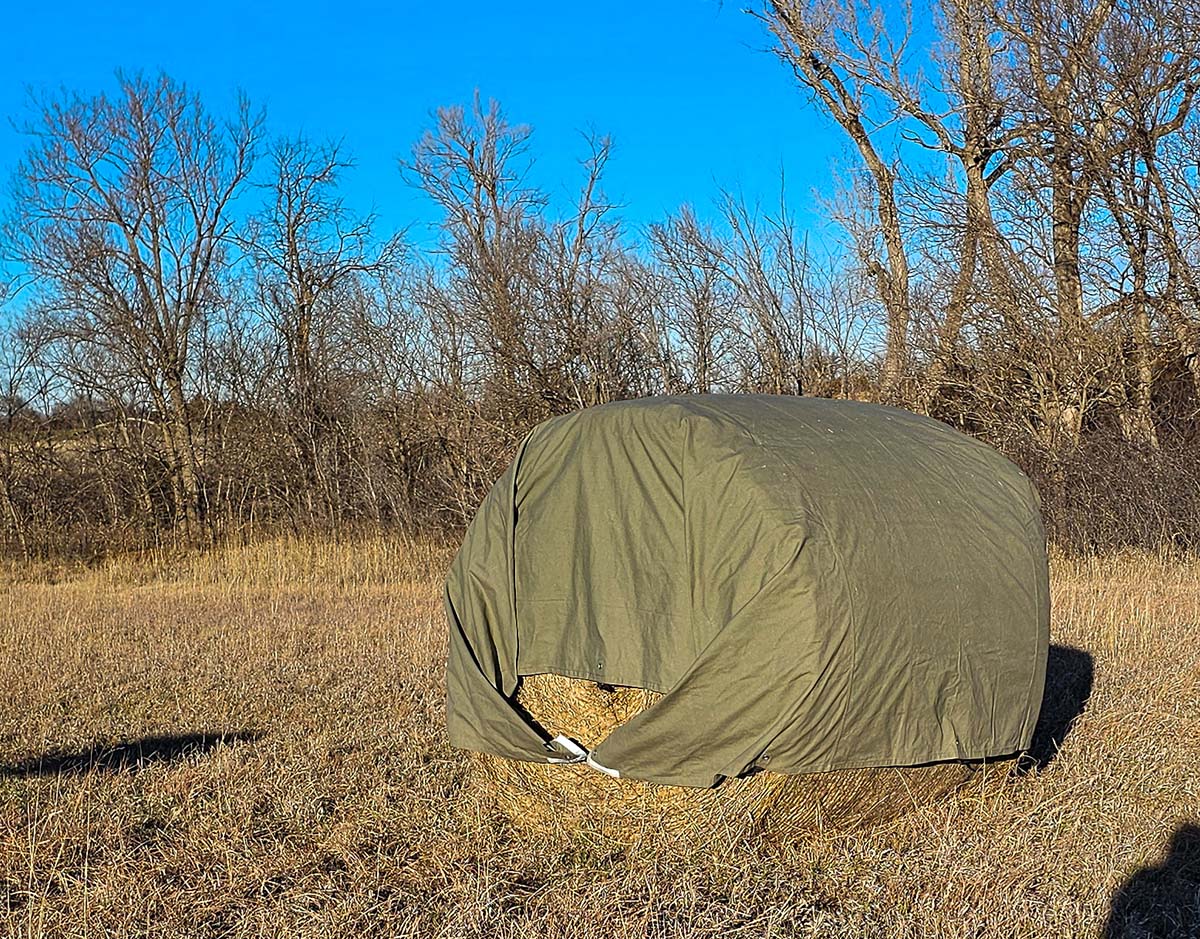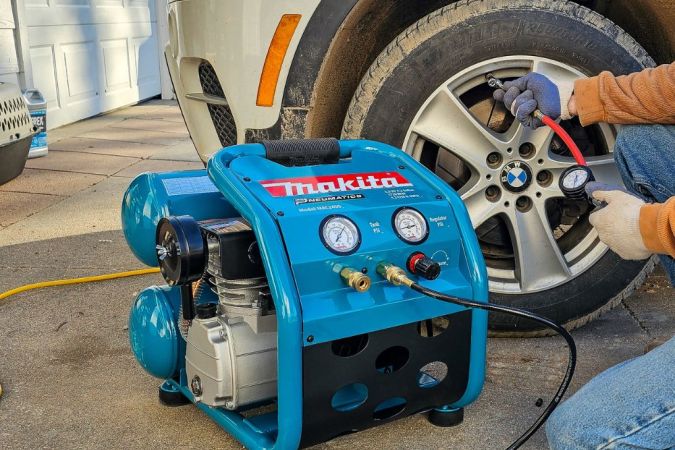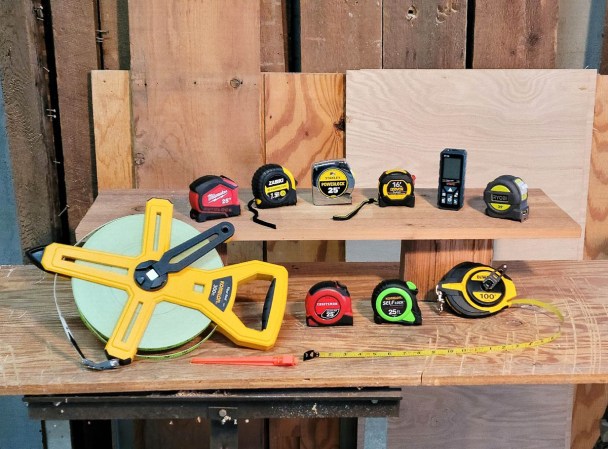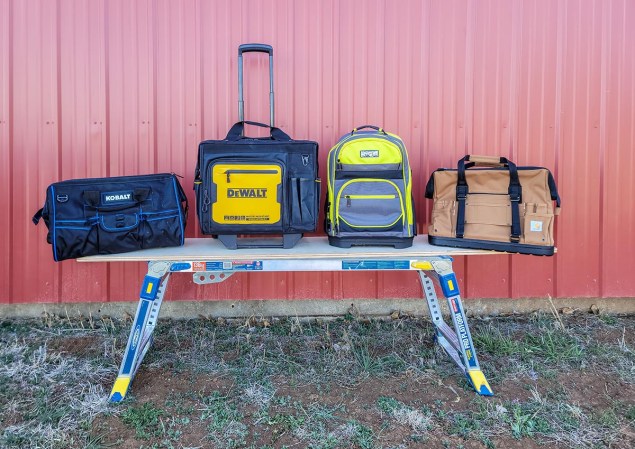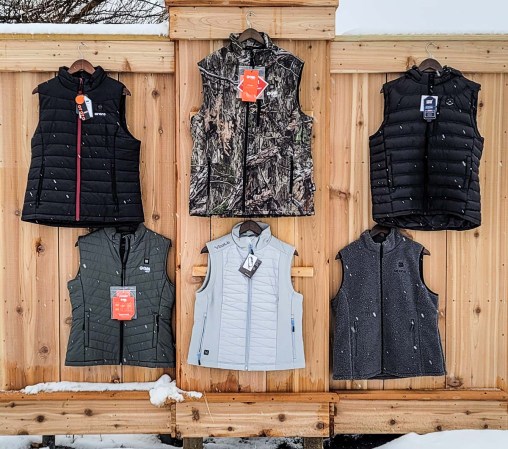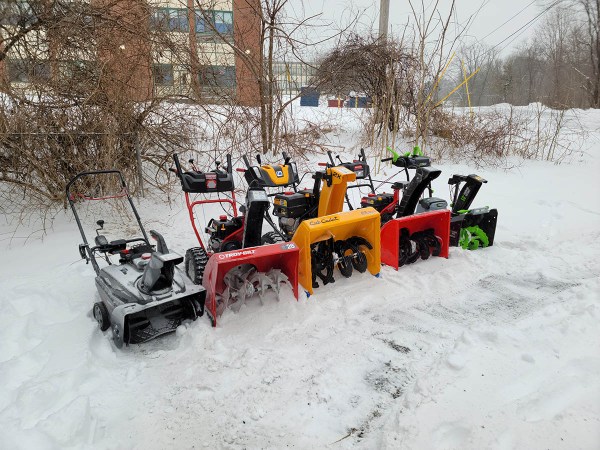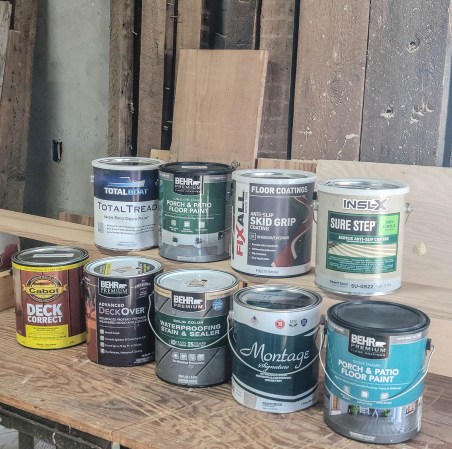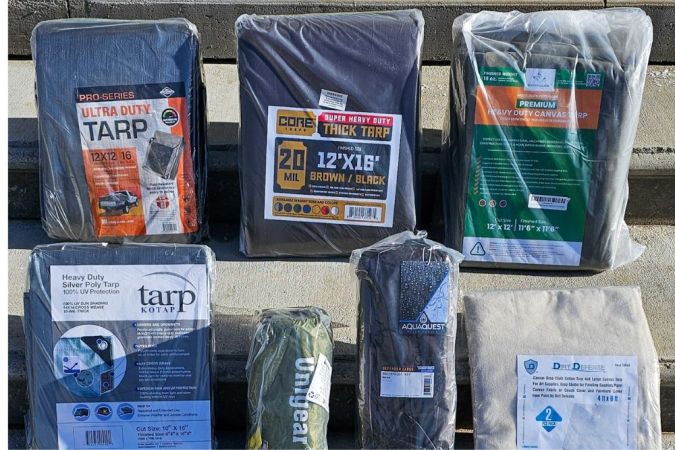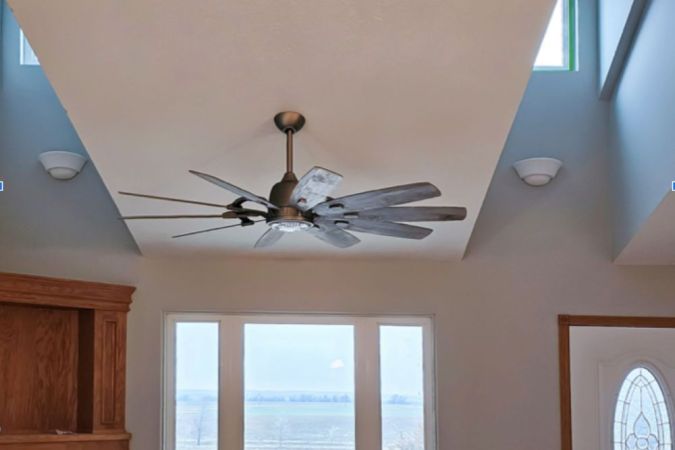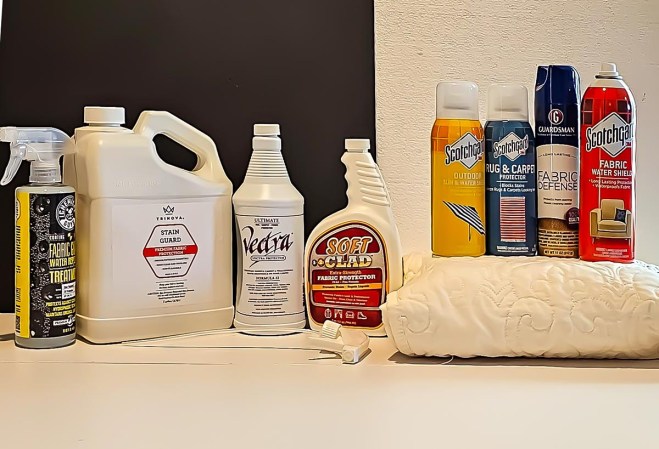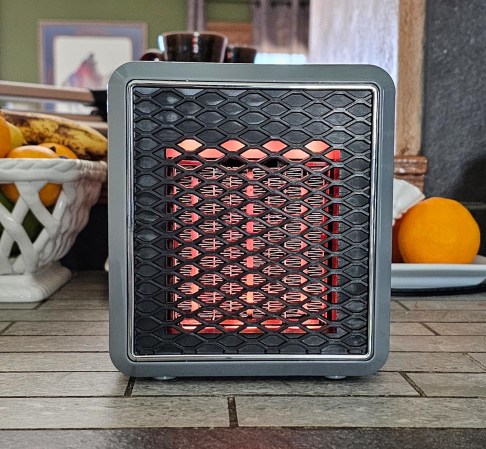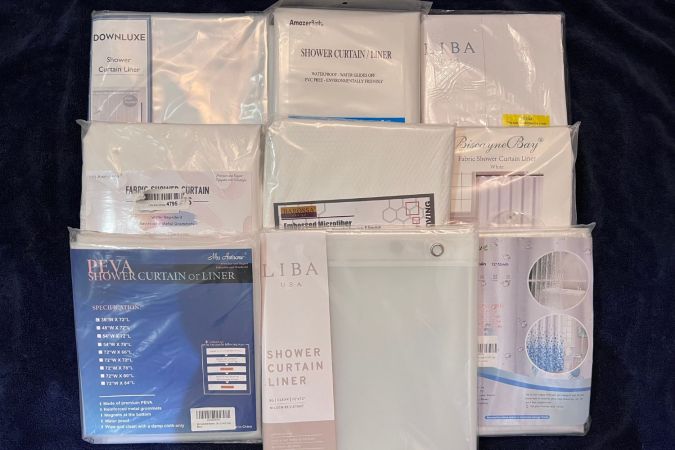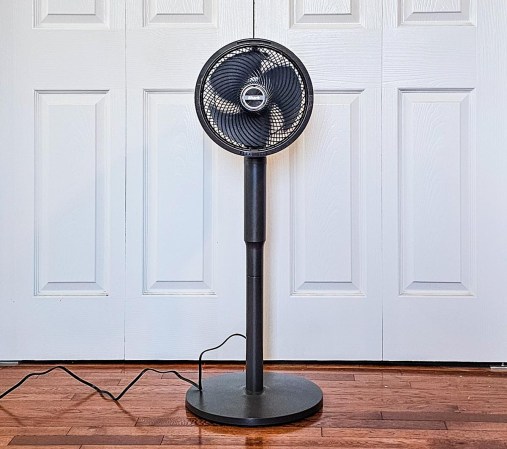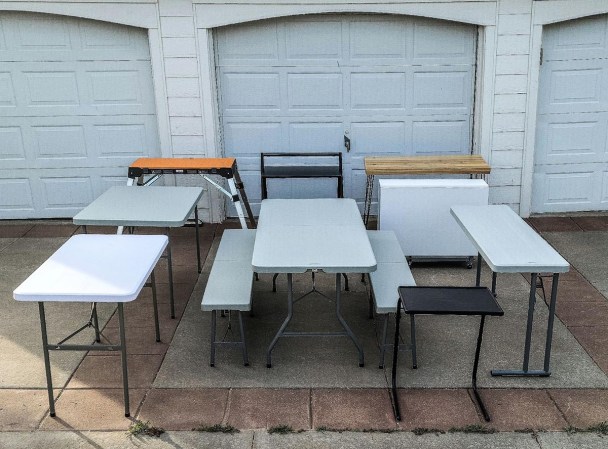We may earn revenue from the products available on this page and participate in affiliate programs. Learn More ›
When you can’t store your outdoor items in a garage, shed, or barn, tarps are the next best line of defense. I recently tested several top-rated tarps to determine which were the best tarps on the market. In those tests, a 12-foot-square canvas tarp made by White Duck earned the “Best Overall” award, and as such, it deserves an in-depth review.
Both rugged and durable, the White Duck canvas tarp I tested provided better protection than competing tarps. Ahead, learn more about this one’s standout features as well as what I think the manufacturer could do to make it even better.
White Duck 18-Ounce 100 Percent Cotton Canvas Tarp: At a Glance
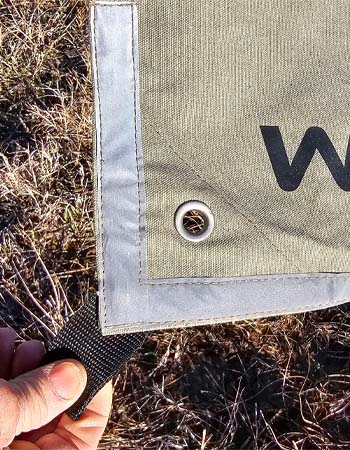
Rating: 9.25/10
SPECS
- Base material: Heavy-duty cotton canvas
- Dimensions: 12 feet long by 12 feet wide; 11.5 feet long by 11.5 feet wide (finished size)
- Weight: 18.81 pounds
- Special features: Water-repellent, rustproof grommets, mold/mildew/ultraviolet (UV)-resistant
PROS
- Double-fill construction offers added density and makes for a more durable tarp
- Double-sewn seams and rustproof grommets hold up well under stress
- Polypropylene loops beside each grommet make it easier to secure tie-down ropes
- Treated with a water-repellent product to resist moisture penetration and slow down soak-in time
- Breathability of the canvas helps reduce the risk of mold and mildew growth
CONS
- White Duck tarps are on the pricey side compared to other types
- Tarp could be improved by reducing the 3-foot spacing between grommets
Get the White Duck tarp at:
What is the White Duck tarp?
The White Duck company, which also goes by White Duck Outdoors, makes premium canvas tarps, tents, drop cloths, and several poly tarps. The tarp I tested was made of thick canvas from a 12-foot-square cut. Factoring in the bit of fabric used to make the seams, the finished size measures 11.5 feet long by 11.5 feet wide, so be aware of the slightly smaller finished size when purchasing.
This White Duck tarp weighs 18 ounces per square yard, and that’s the final weight after added treatments, such as water-repellent canvas coatings. The base weight of the canvas before the treatments is 12 ounces per square yard. This tarp is water-resistant but not waterproof, so while it won’t keep items totally dry during a deluge, it can be used for things like storing firewood to protect it while affording a measure of breathability.
I was surprised at the overall weight of this tarp—18.81 pounds—because I didn’t expect a fabric tarp would weigh that much, even one this big. The heft, I discovered, is primarily due to its “double-fill” construction, a method of weaving where one strand is positioned over and under two other strands at the same time. The result is a denser canvas and a heavier weight.
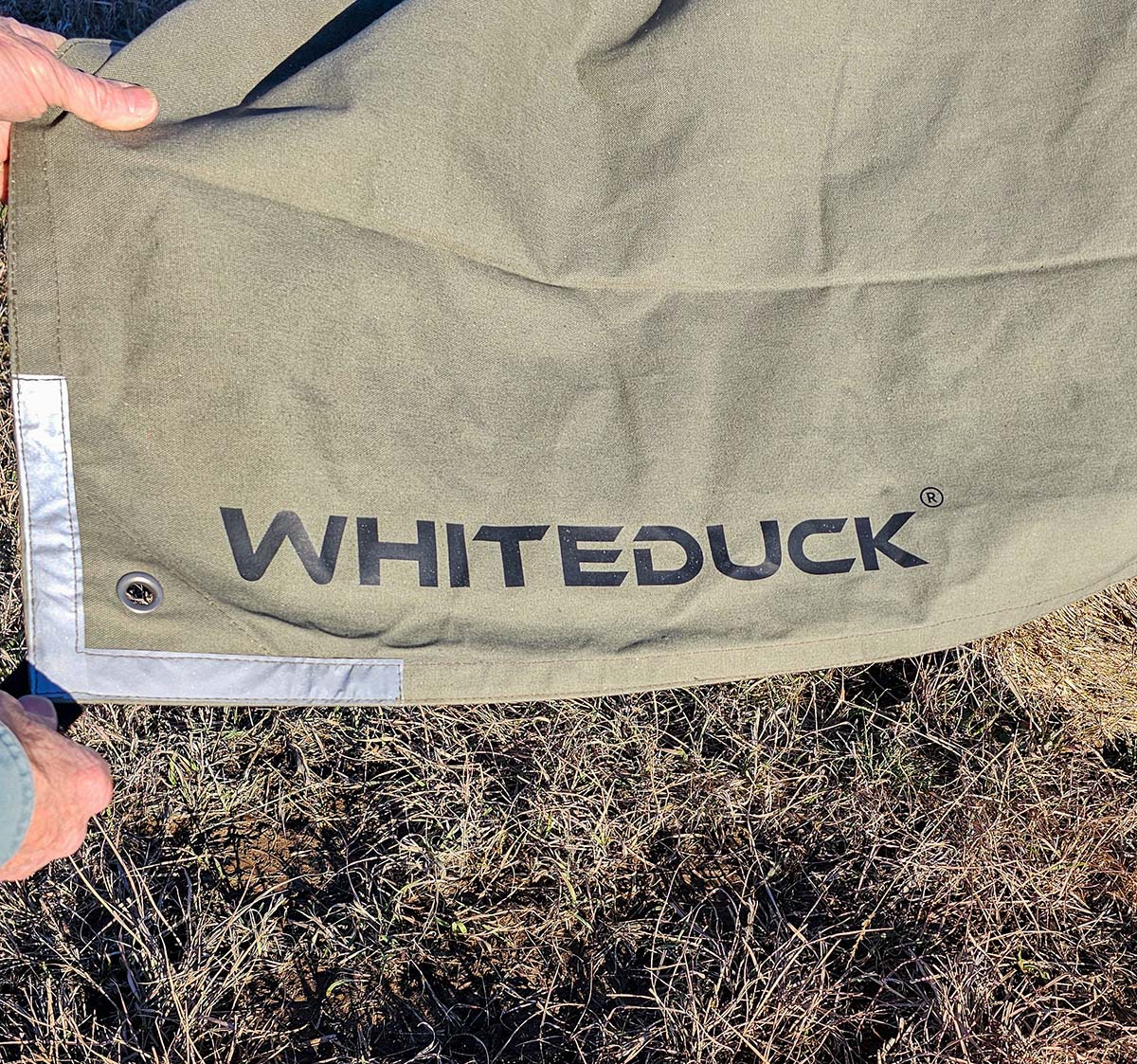
Durability and Dynamics
To test the durability of the White Duck tarp, I used 0.375-inch nylon rope and construction-grade bungee cords to stretch the tarp out as tightly as possible between several trees. I got it as taut and flat as I could, and it showed no signs it was at risk of tearing.
I poured water in the center of the tarp to see if it would leak through. This tarp has been treated with a water-repellent mold- and mildew-resistant product. Initially, the water remained on the surface of the canvas and didn’t soak through. I continued to check every 30 minutes, and after an hour, the water began to soak through the canvas, albeit gradually. It’s not truly a waterproof canvas, but it does offer a high degree of water resistance.
I poked a few holes in the White Duck tarp with an ice pick to see if those spots would tear under stress. I provided that stress by hooking an ATV to one side and pulling the canvas taut to see if the punctures created weak spots that would rip. I stopped before the nylon rope could snap, but the tarp held firm. I was impressed.
The tarp is also coated with a UV protectant to resist fading and deterioration, but since I only tested it for a week, I can’t say whether it would withstand harsh sunrays over months or years.
Seams, Corners, and Construction
Several of the other tarps I tested had edge seams that were folded over and fused, but the White Duck tarp has double-sewn seams for heavy-duty reinforcement. Each grommet is made of rustproof stainless steel set in a polyvinyl triangle at each corner.
Additional side grommets are spaced approximately 3 feet apart, each with a polypropylene loop sewn into the edge for added support. I found the loops very handy for securing the tarp—they made it possible for me to thread nylon rope through the grommet and to the item I was tarping before threading it back through the loop and pulling the rope tight.
Like the rest of the tarp, the grommets are well reinforced. Even when I stretched the tarp to its limits with the ATV, they didn’t give out.
Each corner is also reinforced with some reflective tape, but I didn’t see much benefit in that feature. I suppose if you tarped a large hay bale—as I did—and needed to find it in the field at night, it might be handy if the corners reflected when the beam of a flashlight hit them, but I think it’s a bit of overkill; the tarp is excellent on its own. The only thing I’d request is spacing the grommets more closely—3 feet apart is adequate, but 1.5 feet or even 2 feet would make it easier to fit the tarp over irregularly shaped items.
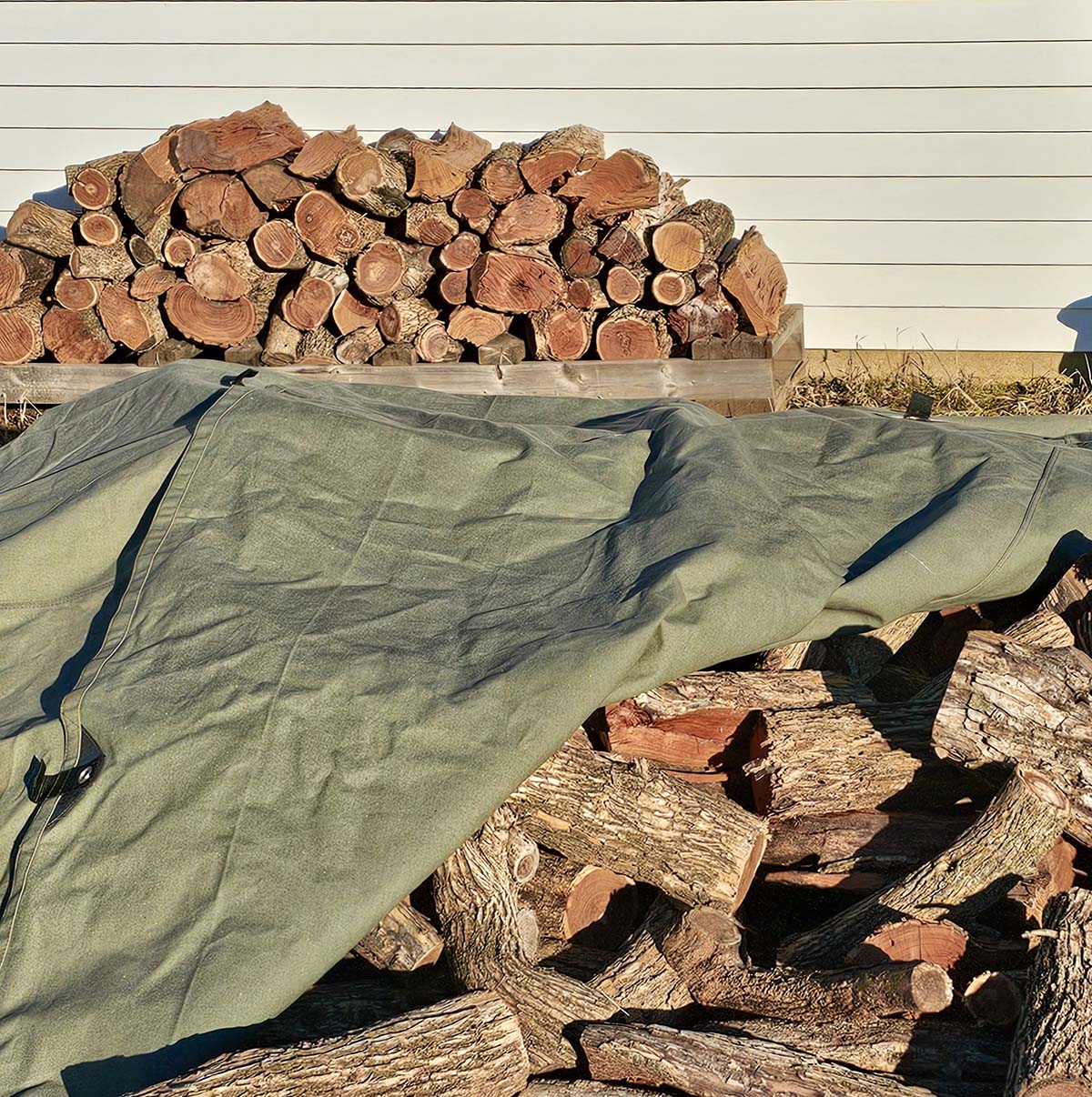
Are White Duck tarps worth the premium price?
Heavy-duty canvas White Duck tarps are on the pricey side. The 12-foot-square version I tested currently runs around $140 at Amazon, while our budget-pick tarp of the same size, the King-A-Ma-Jigs Poly Tarp, costs just $36.99.
The primary difference lies in the intended use. The King-A-Ma-Jigs tarp worked well for covering a truck bed, and it was even more waterproof, but it’s more appropriate for light-duty, short-term protection. In contrast, the White Duck outdoor tarp is made to withstand high stress while offering water resistance and breathability.
If you’re looking to cover something that could develop mold, the breathability factor of the White Duck tarp makes it well worth the added price. I used it to protect large hay bales and piles of firewood that might otherwise develop mold under a less breathable tarp. Because it’s not completely waterproof, however, it’s not the best option for tarping a roof.
However, a more affordable tarp should work fine if you want to cover patio furniture for the winter or keep tools and items dry in a truck bed while commuting.
Where to Buy White Duck Tarps
Get the White Duck tarp at:
Meet the Tester
Glenda Taylor is a product tester and writer specializing in the construction, remodeling, and real estate industries. She and her husband own a general contracting company, and Taylor is experienced in both residential and commercial building applications. She tests a wide range of power tools as well as other home improvement, household, and lawn-and-garden products.

